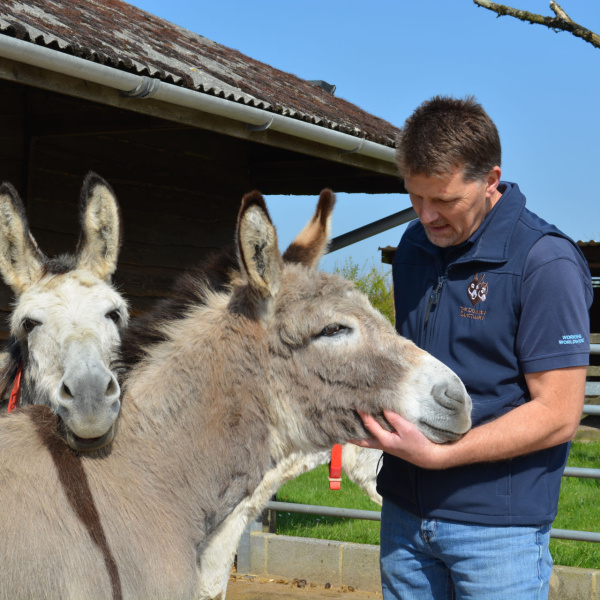Ben Hart, our Senior Lead in Behaviour and Human Behaviour Change, talks us through the importance of taking small steps when shaping behaviour.
There is a quote I love: "Don't fear small steps, fear standing still."
It is easy to focus on the desired result and make learning happen as quickly as possible in our eagerness to help our donkeys and mules learn anything new.
Unfortunately, in our desire to help, we risk making the learning steps too big. When we make our learning steps too big, we make learning harder.
The best way to help a donkey learn is to use the process of shaping behaviour.
Shaping is merely the process of breaking down the desired behaviour, like a calm, safe farrier visit, into small steps or learning blocks and then adding them together through training to build the final behaviour.
We all know about shaping behaviour. After all, we know we have to walk before we can run and crawl before we can walk.
Shaping behaviour is integral to teaching and learning in both humans and animals.
However, unless we learn how to shape behaviour correctly, it is easy to make the simple mistake of making the steps too big.
The challenge of good shaping is how small to make the steps. From our perspective, it is easy to think we are making small steps.
However, we are not the ones having to learn something new. What may seem like small steps to us are big steps to the animal.
To understand how small a step might need to be, we have to think with the animal's mind and perception. The smaller we make the steps, the easier and safer training becomes.
The other key to shaping is writing down the small measurable steps.
For example, a shaping plan for preparing for the farrier might have 100 or more steps, and it is difficult to remember all those steps, let alone keep them all in order unless they are written down.
A written plan has many benefits and yet having a written plan is absent from most people's training.
Here at The Donkey Sanctuary, the Behaviour team uses written shaping plans as a backbone of our work with behaviour.
They provide clear guidance on the steps that might be taken, how small they are and in which order.
There's something else we can avoid with a good shaping plan: going to the problem to solve the problem.
Often if we have a problem with picking up feet, it seems logical and easy to try and solve the problem by trying to pick up the donkey's foot, often leading to them kicking all the more.
A shaping plan starts a long way from the behaviour and builds up at the donkey's speed.
Rather than try and touch the donkey's feet, our shaping plan would break that process down into the small steps that help the donkey avoid distress and keep you safe too. Having the donkey stand calmly with you by their shoulder might be a safer place to start.
Between a donkey being calm with their foot being touched and picking up their foot, there are five smaller steps we need to complete first to ensure success.
It's at this point people tend to have a worried look on their face that says, "yes, but all those steps will take forever, and the farrier is coming in six weeks."
However, one of the fantastic benefits of brilliant shaping is the smaller you can make the steps, the faster the animal can learn.
If you can make learning logical and easy for the donkey and the steps so small that they can't fail, they take less time to learn.
If you are currently trying to train a behaviour or work through a behaviour issue and would like help to develop an excellent shaping plan as part of your behaviour modification program, please contact our Behaviour team, who will be happy to help.




